Discover 11 hidden attractions, cool sights, and unusual things to do in Gatineau (Canada). Don't miss out on these must-see attractions: Canadian Museum of History, Canadian Children's Museum, and Pink Lake. Also, be sure to include Alexandra Bridge in your itinerary.
Below, you can find the list of the most amazing places you should visit in Gatineau (Québec).
Table of Contents
Canadian Museum of History
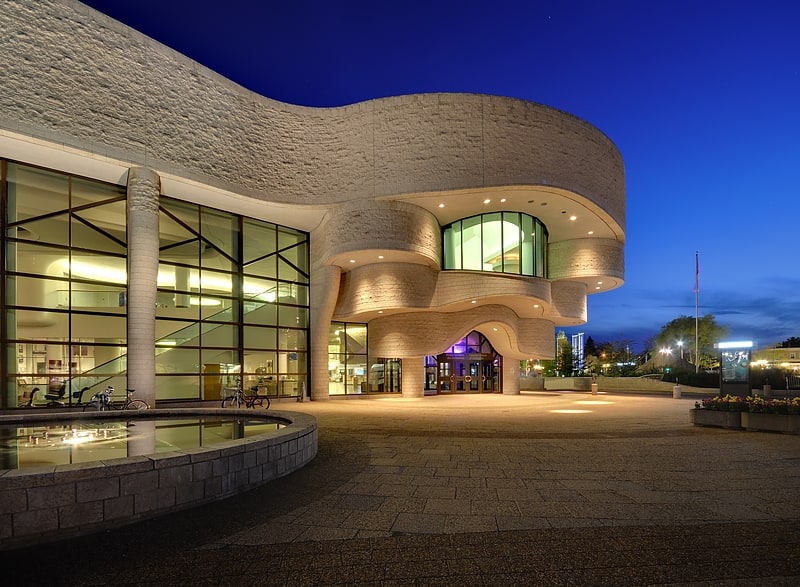
Exhibits devoted to Canadian heritage. The Canadian Museum of History is a national museum on anthropology, Canadian history, cultural studies, and ethnology in Gatineau, Quebec, Canada. The purpose of the museum is to promote the heritage of Canada, as well as support related research. The museum is based in a 75,000-square-metre-building designed by Douglas Cardinal.
The museum originated from a museum established by the Geological Survey of Canada in 1856, which later expanded to include an anthropology division in 1910. In 1927, the institution was renamed the National Museum of Canada. The national museum was later split into several separate institutions in 1968, with the anthropology and human history departments forming the National Museum of Man. The museum relocated to its present location in Gatineau in 1989 and adopted the name Canadian Museum of Civilization the following year. In 2013, the museum adopted its current name, the Canadian Museum of History, and saw its mandate modified so further emphasis was placed on Canadian identity and history.
The museum's collection contains over three million artifacts and documents, with some on display in the museum's permanent exhibitions. The museum also hosts and organizes a number of temporary, travelling, and online exhibitions, like the Virtual Museum of New France.[1]
Address: 100 Rue Laurier, K1A 0M8 Gatineau
Canadian Children's Museum
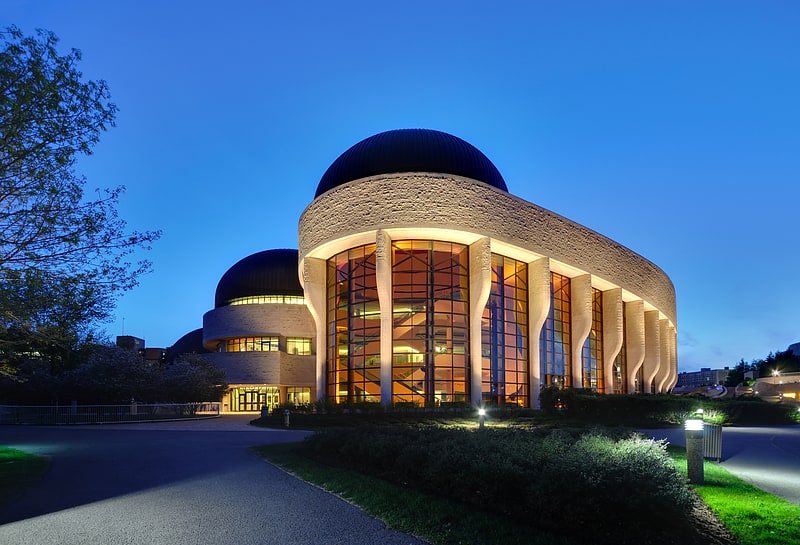
Learning center with exhibits for kids. The Canadian Children's Museum is a children's museum and exhibition operated by the Canadian Museum of History in Gatineau, Quebec, Canada. The CCM is among the most popular attractions in the country, attracting about half a million visitors each year. It is also Canada's largest exhibition centre designed specifically for children up to age 14 and their adult companions. Most of the space is devoted to the museum's permanent exhibition The Great Adventure. The CCM also presents a changing line-up of special exhibitions curated internally or acquired from other institutions.[2]
Address: 100 Rue Laurier, K1A 0M8 Gatineau
Pink Lake
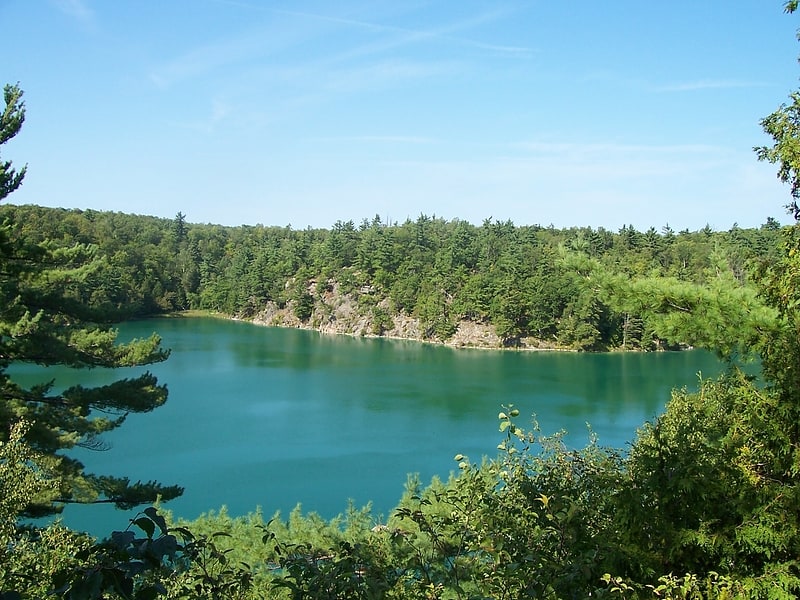
Scenic lake with a perimeter trail. Pink Lake is a meromictic lake located in Gatineau Park, Quebec, Canada. The surface of the waters are a deep green during the month of August and September due to the abundance of algae in the water. The lake is in danger of eutrophication due to human activities. Park management forbids swimming in the lake, walking domestic animals near it, straying from the wooden boardwalk for sight-seers, and throwing stones into the lake.[3]
Alexandra Bridge
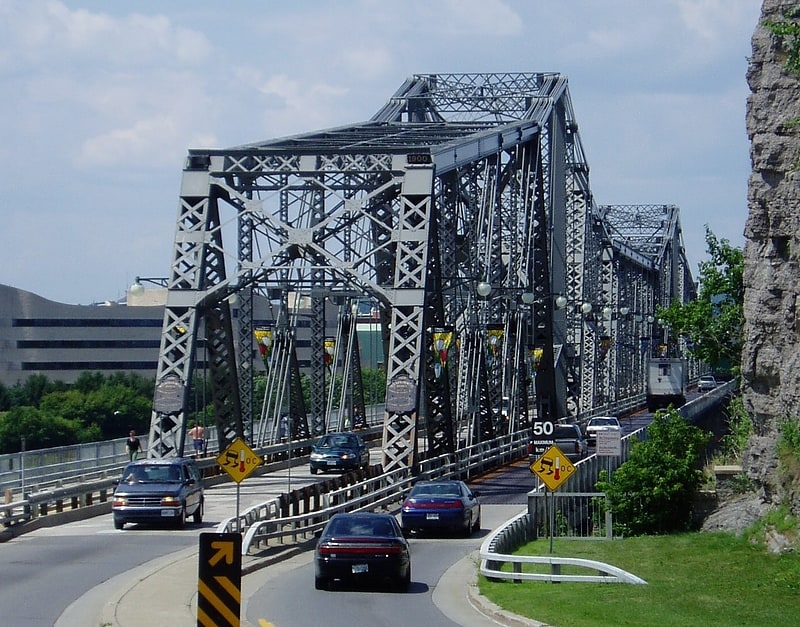
Cantilever bridge in Canada. The Royal Alexandra Interprovincial Bridge, also known as the Alexandra Bridge or Interprovincial Bridge, is a steel truss cantilever bridge spanning the Ottawa River between Ottawa, Ontario and Gatineau, Quebec. In addition to carrying vehicle traffic, a shared use pathway on the bridge for pedestrians and cyclists is maintained by the National Capital Commission.
The bridge was designated by the Canadian Society for Civil Engineering a National Historic Civil Engineering Site in June 1995. It was owned by the Canadian Pacific Railway until it was taken over by the National Capital Commission in 1970. It is now (2018) owned by the Government of Canada and maintained by Public Services and Procurement Canada (PSPC).[4]
The Queen's Beasts
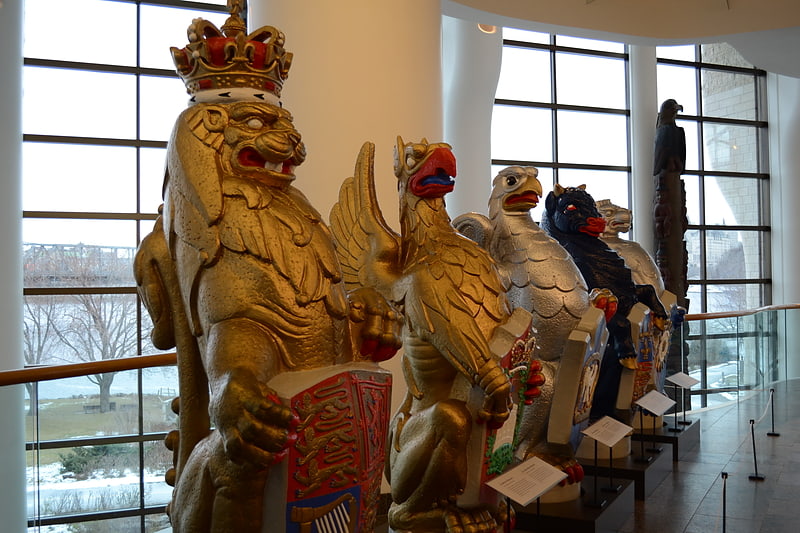
The Queen's Beasts are ten heraldic statues representing the genealogy of Queen Elizabeth II, depicted as the Royal supporters of England. They stood in front of the temporary western annexe to Westminster Abbey for the Queen's coronation in 1953. Each of The Queen's Beasts consists of an heraldic beast supporting a shield bearing a badge or arms of a family associated with the ancestry of Queen Elizabeth II. They were commissioned by the British Ministry of Works from the sculptor James Woodford, who was paid the sum of £2,750 for the work. They were uncoloured except for their shields at the coronation. They are now on display in the Canadian Museum of History in Gatineau, Quebec.
The original models are the King's Beasts which survive at Hampton Court Palace near London, sculpted in stone for King Henry VIII (1509–1547) and his third wife Jane Seymour. Copies survive at nearby Kew Gardens. In the 1920s a set of 76 similar heraldic beasts was replaced on the roof of St George's Chapel, Windsor Castle, having been taken down in 1682 due to dilapidation.[5]
Vintage Wings of Canada
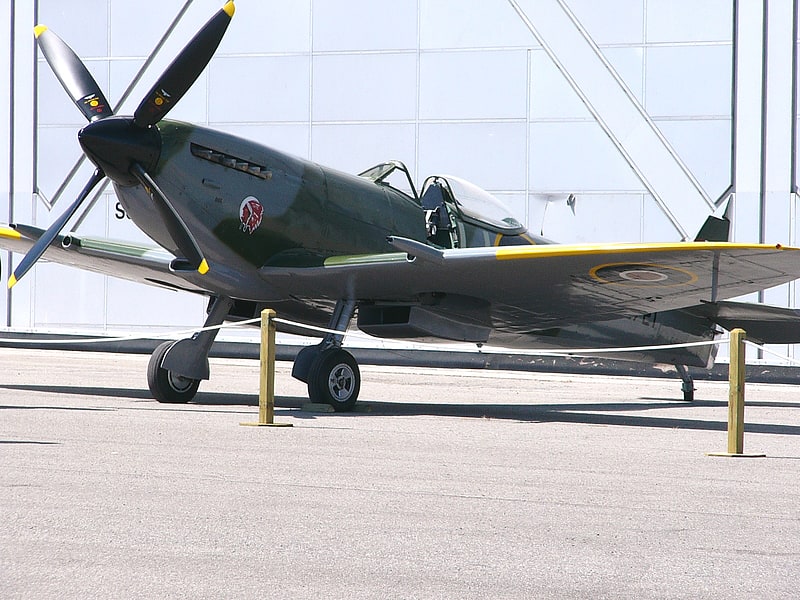
Museum. Vintage Wings of Canada is a not for profit, charitable organization, with a collection of historically significant aircraft. The facility is located at the Gatineau-Ottawa Executive Airport, Quebec, Canada. It was founded by former Cognos CEO and philanthropist Michael U. Potter. Most aircraft in the collection are in flying condition, or being restored to flying condition and are frequently flown.
The facility is located in a 23,000 sq ft (2,100 m2) hangar that was designed to resemble a wartime military hangar. The hangar is open on Saturdays from 9:00 a.m. to 3:00 p.m. for public visitors. Visits from Monday to Friday need to be scheduled in advance. As well, the facility is host to group tours, aircraft fly-ins and visits by veterans with prior arrangement.
Vintage Wings is a flying museum, which displays its aircraft in the air and on the ground at many airshows and other events such as Royal Military College of Canada graduation parades, Battle of Britain Sunday parades and many other air shows in Canada and the USA.[6]
Address: 1699 Rue Arthur Fecteau Street, J8R 2Z9 Gatineau
Leamy Lake
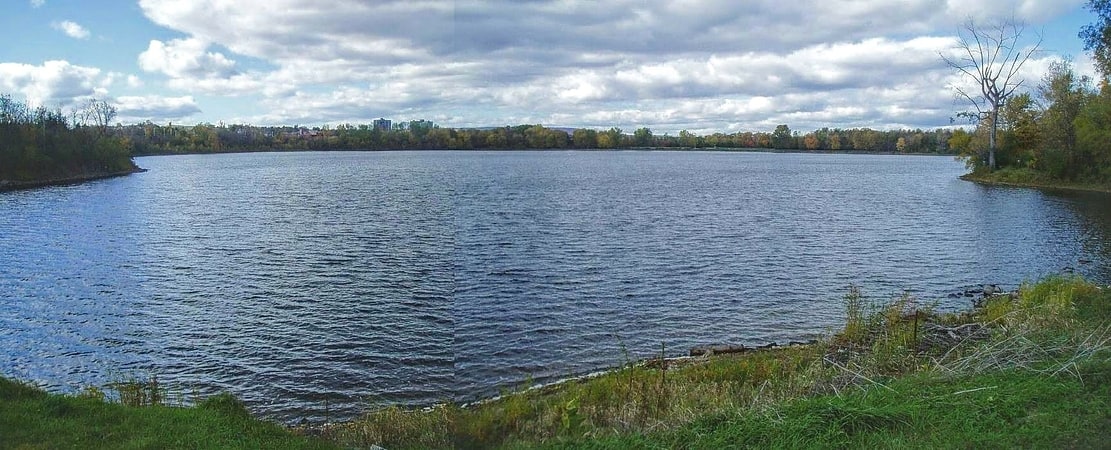
Lake in Québec, Canada. Leamy Lake is a lake in the Hull sector of Gatineau, Quebec, Canada. The lake is located just to the south of the Gatineau River, and just west of the Ottawa River, and is linked to both of them with flowing in from the Gatineau and exiting to the Ottawa. To the south is the Lac de la Carrière, a former quarry that is now a lake that is also linked.
The lake is named after Andrew Leamy, an Irish settler in the region who operated a mill near the lake. He was married to Erexina Wright, the granddaughter of Hull's founder, Philemon Wright. The area became heavily industrialized in the nineteenth century. Much of the industry left the area after the Second World War and in the 1960s much of the area around the lake was turned into a large park. The beach on the lakeshore became a popular swimming location, however there were persistent problems with pollution, mainly flowing in from the Gatineau River. To solve this the inflow to the lake was blocked in the 1970s. This solved some of the problem. By the 1990s the Gatineau River had become much cleaner, and the stagnation of the lake was causing its own problems, the channel was thus reopened.
On the southern shore of the lake, between it and Lac de la Carrière, is the Casino du Lac-Leamy, one of the region's major tourist attractions.[7]
Théâtre de l'Île
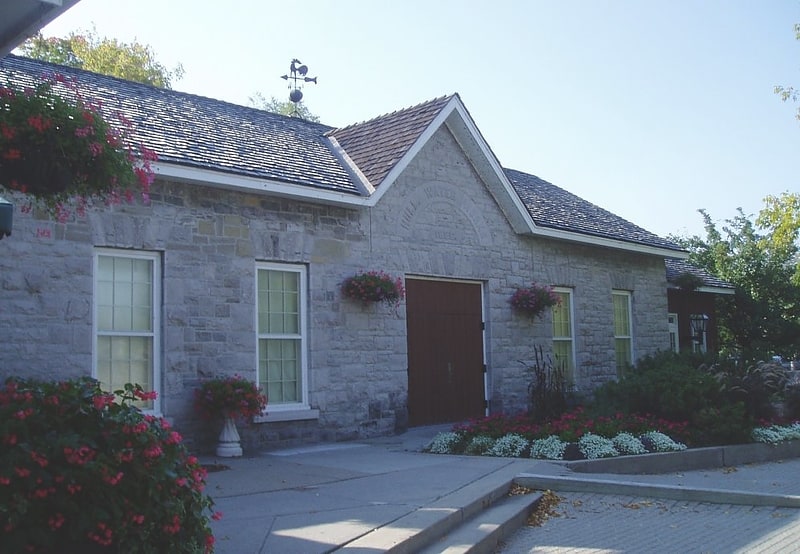
Theatre in Gatineau, Québec. The Théâtre de l'Île is a small municipally run theatre in Gatineau, Quebec, Canada. It is located on a small island at the southern end of the Ruisseau de la Brasserie, a small river running just to the west of Montcalm Street in the former city of Hull. The building was originally constructed in 1886 as the Hull Water Works, at a time when the site was at the heart of a largely industrial area. In the subsequent decades the building served a number of different purposes. In 1974, it suffered a devastating fire. The city of Hull and the National Capital Commission joined together to rebuild the structure as a theatre. It opened in 1976, and was the first municipally run theatre in Quebec.
The theatre seats up to 119. It puts on a number of different shows per year, with some 25,000 spectators per annum.[8]
Address: Gatineau, 1, rue Wellington, Gatineau, Quebec, J8X 2H3
Champlain Bridge

Girder bridge in Gatineau, Quebec. The Champlain Bridge crosses the Ottawa River about 5 km west of Parliament Hill, joining the communities of Ottawa, Ontario and Gatineau, Quebec. It is the westernmost link between the two cities.
It was originally built between 1924 and 1928 by the Federal District Commission, the predecessor to the National Capital Commission (NCC), and the NCC continues to maintain the bridge. The bridge consists of 4 spans and crosses Riopelle, Cunningham and Bate Islands in the Ottawa River. The total length of the bridge is 1.1 km (0.68 mi), making it the longest bridge spanning the Ottawa River.
On the Ontario side, it is a continuation of Island Park Drive and is also connected to the Sir John A. Macdonald Parkway. It connects to Aylmer Road on the Quebec side.
A third reversible lane was added when the bridge was rebuilt in 2002, which is a high-occupancy vehicle lane used for crossings in the direction of peak traffic.
The bridge was named after Samuel de Champlain who is associated with the portage around the rapids in this section of the river. The short access roadway on the Aylmer side of the bridge is called Place Samuel de Champlain.
A 2 mi (3.2 km) stretch of the Ottawa River that the Champlain Bridge passes over was not charted by the Canadian Hydrographic Service.[9]
St. Joseph Cathedral
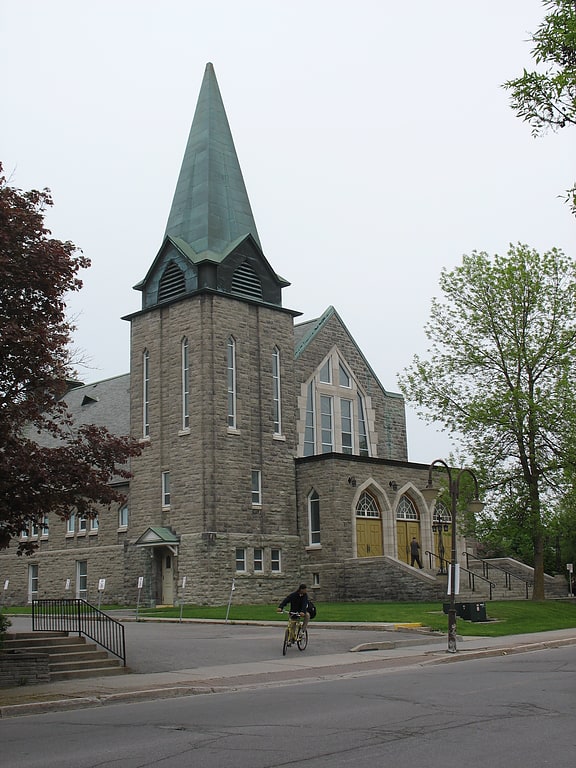
Catholic cathedral in Gatineau, Quebec. The St. Joseph Cathedral is a religious building belonging to the Catholic Church and is the seat of the Roman Catholic Archdiocese of Gatineau, in the administrative region of Outaouais, in the province of Quebec in eastern Canada. It is located in the former city of Hull, at 245, boulevard Saint-Joseph in Gatineau, Quebec, Canada.
Its construction began in 1951 and ended the following year under the plan and design of Lucien Sarra-Bournet. It has been declared a religious heritage.[10]
Address: 245 St-Joseph, Gatineau
Jacques Cartier Park
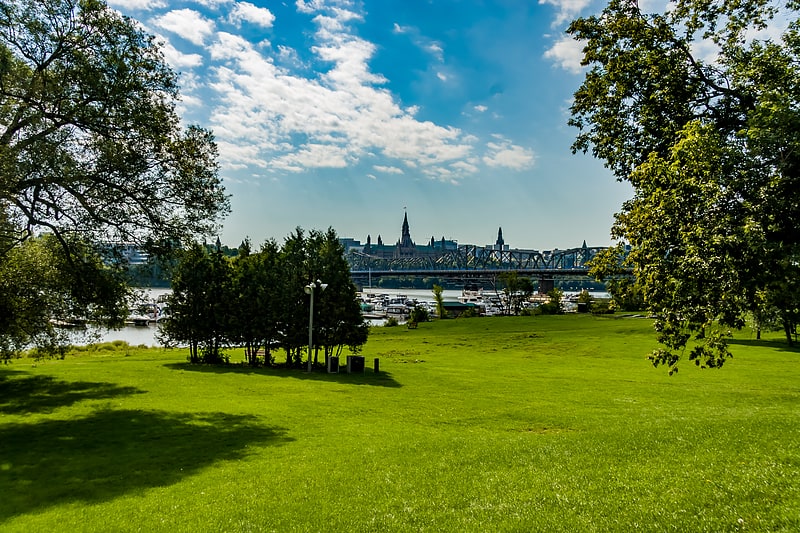
Park in Gatineau, Quebec. Jacques-Cartier Park is a park in Gatineau, Quebec, Canada, along the Ottawa River. It is at the base of the Alexandra Bridge, facing the National Gallery of Canada in Ottawa. It is named for French explorer Jacques Cartier, who arrived at the mouth of the Ottawa River while he was looking for the Northwest Passage. The National Capital Commission uses the site to run one of its popular annual events, Winterlude every February. It is also a busy site on Canada Day, offering activities such as music and dance shows throughout the day, entertainment and activities for children, and demonstrations by the Canadian Forces SkyHawks parachute team.
Maison Charron, the oldest surviving house in Hull, is located in the park. It was restored by the NCC in 1985 and is used for various activities.[11]